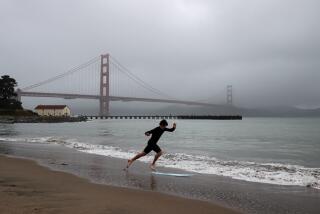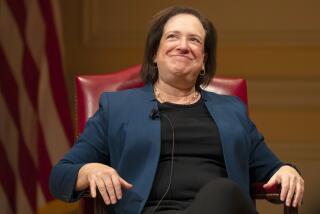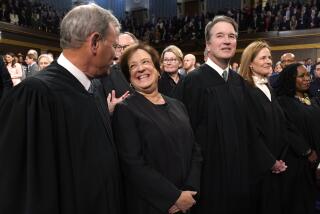A Skeptical High Court Takes Up Case on ‘Must-Carry’ Cable Rule
WASHINGTON — For the second time, the Supreme Court on Monday took up a pivotal First Amendment dispute over whether Congress can force cable TV operators to carry local broadcast stations.
But in contrast to the first hearing two years ago, attorneys representing the broadcasting industry and the federal government faced sharp questioning about their quest to get the court to uphold the so-called must-carry provisions of the 1992 Cable Act.
The skepticism of several justices, on opening day of the court’s 1996-97 session, led some court observers to predict that the court will overturn the law requiring that cable operators carry over-the-air stations in their service areas.
Andrew Jay Schwartzman, executive director of the Media Access Project, a Washington-based advocacy group, acknowledged that it is difficult to forecast how the Supreme Court justices will vote from the questions they ask during oral arguments.
“But the court was considerably hostile to the government’s position,” Schwartzman said. “You have to think that this case is going to be decided in favor of the cable industry.”
The case represents the high court’s attempt to identify the free-speech rights of the cable television industry, whose wires serve 60% of television viewers. The outcome will have significant impact not only on broadcast and cable viewers, but also on the nation’s 12,000 cable systems.
The cable companies stand to gain millions of dollars in additional advertising revenue if the law is struck down, because they would be able to replace broadcast stations, whose advertising space is locked up before their programming reaches the cable, with cable-only stations, which share their ad revenue with the cable systems.
The impact could be particularly pronounced in large television markets such as Southern California, where numerous small broadcast stations featuring religious, ethnic and other special programming must compete against their bigger network-affiliated brethren. Without the must-carry law, supporters argue, many of these stations could go dark.
In the 1992 Cable Television Act, Congress required that cable operators devote as much as a third of their channel capacity to local, over-the-air stations.
The court is expected to rule in the case, Turner Broadcasting vs. the Federal Communications Commission, sometime before it closes its new session in June.
On Monday, the going was tough for Bruce J. Ennis Jr., representing the National Assn. of Broadcasters, and Walter Dellinger, the acting solicitor general making his first oral argument before the Supreme Court on behalf of the federal government.
Dellinger told the nine justices that broadcast stations took a heavy financial hit when denied a place by the local cable carrier. He urged the court to uphold the must-carry law to “preserve a healthy multiplicity of broadcast voices for the 40% of Americans that do not have cable.”
But Justices Antonin Scalia and Anthony M. Kennedy questioned whether broadcasters would suffer any significant financial harm in the absence of a must-carry rule.
And Justice Stephen G. Breyer, who could be the swing vote, noted that cable companies have excluded local broadcast stations 8,000 times but that only 31 of the stations have gone off the air.
Following passage of the 1992 law, cable operators challenged the must-carry provision. After a three-judge federal appeals court upheld the law, the Supreme Court sent the case back to the federal district court where it originated for a decision on whether cable operators were hurt by the must-carry provision and whether broadcasters really needed it.
In the original case, the court split 5 to 4 not to discard the law. Since then, Harry Blackmun, one of the justices in the majority, has retired, his seat taken by Breyer.
Ennis, interviewed after the hearing, said that despite the sharp questioning, the outcome of the case is “too close to call.”
“The justices who dissented the first time around continued to dissent,” Ennis said. “Since it ended up basically a 4-to-4 split” among the eight justices who heard the case the first time around, he said Breyer will probably cast the decisive vote.
More to Read
The biggest entertainment stories
Get our big stories about Hollywood, film, television, music, arts, culture and more right in your inbox as soon as they publish.
You may occasionally receive promotional content from the Los Angeles Times.










